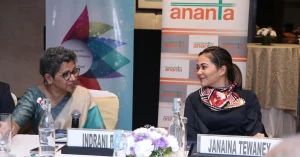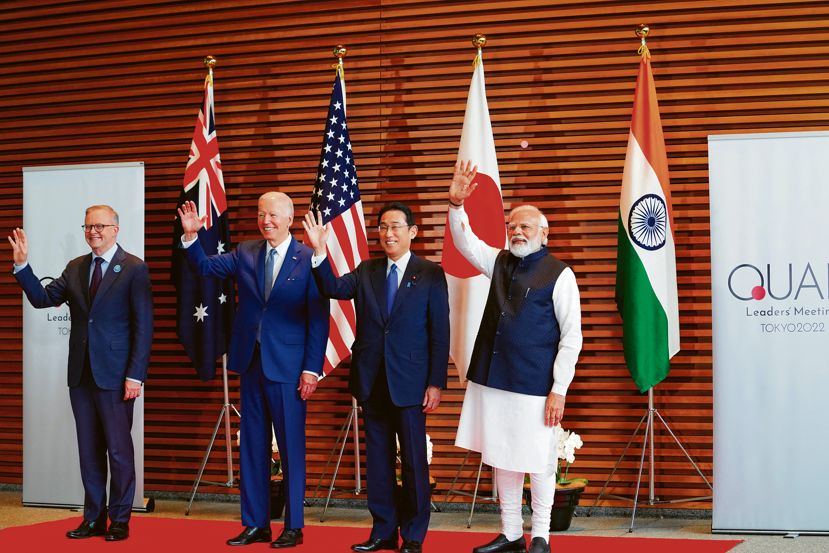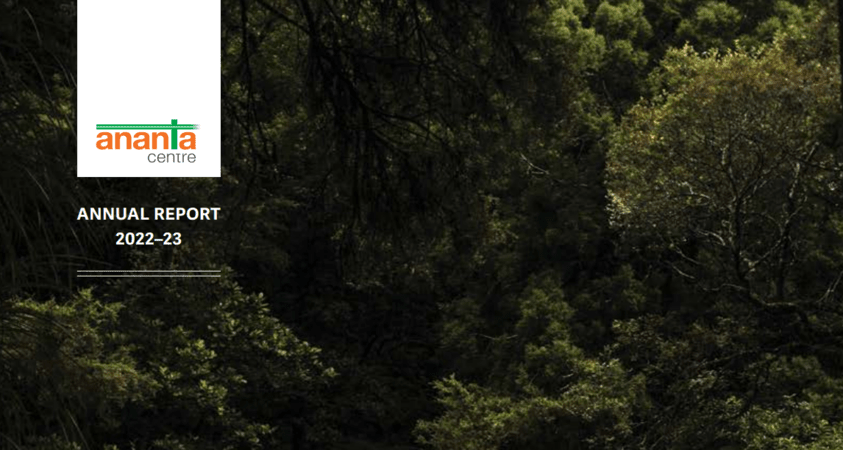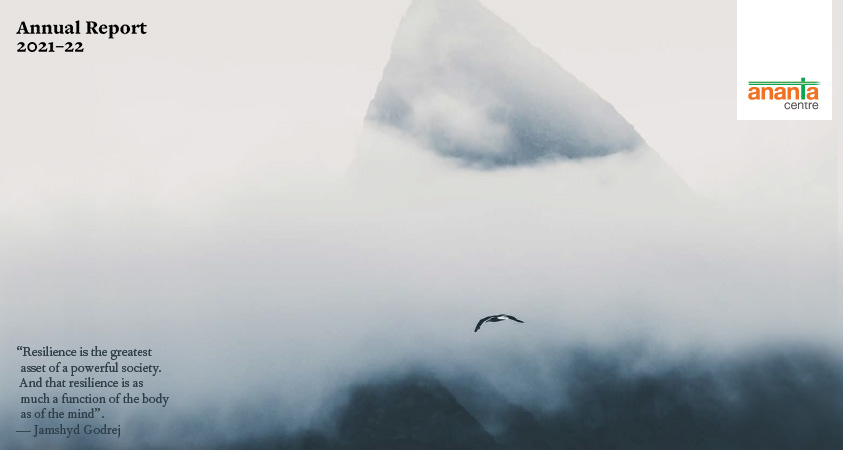Bold Moves, But Not Yet Out Of The Woods
The last few weeks have seen the Union government in firefighting mode. As the signs of an economic slowdown became increasingly more evident, the Union finance ministry came out with a slew of measures – as many as four packages in as many weeks – in a bid to revive the Indian economy. A rough estimate puts the total impact of these measures at a little over Rs 1.6 lakh crore by way of revenues foregone and additional expenditure by the government.
Three distinctive features of the initiative stand out. One, the policy packages began to be rolled out a little before the six-year low economic growth of 5 per cent for the April-June 2019 period was made public on August 30 – signifying thereby that the deeply troubling phase of the government remaining in denial mode on the economy’s woes had got over by the middle of August, just before the first quarter growth number came out.
Two, the nature of the policy packages announced so far are largely aimed at tackling the supply-side problems of the economy. Most measures, barring a few, were aimed at triggering a revival in investments, even though the more pressing need for addressing the economy’s woes arose from the demand side.
And three, in spite of the four installments of the policy packages, there is no guarantee that the economic slowdown challenges will get over in the short run. Economic growth will continue to be a problem area for the second and the third quarter of the current year and the full beneficial impact of the measures announced in the last month would kick in only by next year.
(For a detailed understanding of the fourth package on corporation tax cuts, please see the Special Economic Review Note released on September 23. Here is the weblink: CLICK HERE
Uninspiring Economic Data
The Indian economy is yet to emerge out of the economic slowdown, if the latest data released in the last few weeks are any indication. Economic growth, measured by GDP in real terms, was estimated at 5 per cent for April-June 2019 compared to 5.8 per cent in the previous quarter. Industrial production for July 2019 improved a bit at 4.3 per cent, but the capital goods sector continued to remain in contraction mode. And retail inflation for August 2019 decelerated further to 3.21, compared to 3.69 per cent in the same month a year ago.
India’s foreign trade performance continued to be a cause for concern as merchandise exports fell in August 2019 by 6 per cent to $26 billion and imports fell by a higher margin of 13 per cent to about $40 billion. With this, the first five months of 2019-20 saw exports contracting by 1.5 per cent to $134 billion and imports during the same period too fell by 5.7 per cent to $206 billion. A shrinking trade deficit was no comfort as while falling exports was a big blow to Indian’s manufacturing ambitions, a contraction in imports indicated a slowing demand for industrial products, which did not augur well for economic growth. What helped the overall trade scenario somewhat was services exports, which continued to maintain growth. Taken together with merchandise and services, exports in the April-August period grew by 3 per cent to $226 billion and imports fell by 1.18 per cent to $268 billion, presenting a total deficit of $41 billion for this period. At this rate, India’s deficit may not be a big worry, but its exports recovery, key to its manufacturing revival, will still remain elusive.
The series of measures that the government unleashed in the last few weeks can be explained in the context of slowing growth, contraction in exports and inflation continuing to remain benign.
The GST Balm
The government continues to deal with the challenges of implementing the goods and services tax (GST) even after rolling it out more than two years ago. The 37th meeting of the GST Council continued to rationalise rates for different items and provide waivers from compliance norms to small tax payers. Thus, the cess for mini-vans with a capacity of carrying 10-13 persons were reduced and the GST rates for low-cost hotels, outdoor catering, job-work for diamond jewellery and marine fuels were cut, while those for caffeinated beverages and railway wagon supplies were raised. Similarly, tax payers with an annual turnover of up to Rs 2 crore were given the option of filing annual returns for the last two years and the date for introducing the simplified returns was further postponed to April next year. The big news from the meeting was that the demands for cutting automobile rates fell on deaf ears. Given the way the administration of the GST continues to be tweaked, it appears that the new tax system is still work in progress and far from what an ideal taxation system or the “good and simple tax” the GST was expected to become.
Sops For Real Estate And Exports
Earlier in September, the government had announced a Rs 70,000-crore package for the exports and real estate sectors, two segments of the Indian economy that had been hit hard by the slowdown and their revival could help both jobs creation and growth. A Rs 20,000-crore fund, with the government providing half of the amount, was decided to be set up to arrange for last-mile funding for housing projects, which are not subjected to bankruptcy proceedings or have not been classified as bad debt. The move was expected to benefit around 350,000 home buyers. For exporters, the government announced a new scheme for reimbursing taxes paid on exports. To be called the Remission of Duties or Taxes on Export Products (RoDTEP), it would come into force from January 2020 and would replace the existing system. The new scheme, with better coverage and improved incentives, would entail that the government foregoes an annual revenue of Rs. 50,000 crore, Rs. 10,000 crore more than what was forgone under the earlier scheme. In addition, Sitharaman also announced that the Export Credit Guarantee Corporation will offer higher insurance cover to banks giving credit to exporters and export credit would enjoy the priority sector lending facilities of the Reserve Bank of India.
Relief For FPIs & Start-ups
In her first intervention to revive the economy, Sitharaman announced a package of policy changes on August 23. Thus, she withdrew the enhanced surcharge her Budget had levied on income of foreign portfolio investors on their short- and long-term gains on equity transactions. This meant a revenue loss of Rs 1,400 crore, but it also assuaged the hurt sentiments of the stock markets. There was some relief for start-ups as well. Start-ups registered with the government were to be spared from any angel tax under relevant provisions of the income-tax act. Once again, improving the stock market sentiment was the target. She also announced the setting up of a dedicated cell in the Central Board of Direct Taxes to address problems faced by start-ups.
Demand-side Boost To Auto
Sitharaman announced a few more steps to revive demand in the economy and address the concerns of those who believed that the economic slowdown could be addressed more quickly if the demand constraints in the economy were addressed first. Thus, she announced a package for the automobile sector that included a deferment of one-time registration fees for vehicles till June 2020, an additional 15 per cent depreciation, over and above the existing 15 per cent depreciation, on all vehicles acquired till March 31, 2020, permission to all BS-IV vehicles purchased before March 31, 2020 to be run on roads till their registration period i.e. 10 years for diesel vehicles and 15 years for petrol vehicles, a policy to encourage scrapping of old vehicles and a focus on building electric vehicles infrastructure, instead of replacing electric vehicles with vehicles run on internal combustion technology. The FM’s package on the demand side also included decisions to clear all pending GST refunds to the small and medium enterprises and putting in place a system by which all refund claims would be settled within two months of the application. Even the decision to launch new loan products linked to external rates such as the repo rate was expected to speed up sales in troubled sectors such as housing and vehicles.
Three Steps For The Financial Sector
Three major developments took place in India’s financial sector in the last few weeks. One, the government on August 23 announced that the Rs 70,000-crore recapitalisation plan announced in the Budget for public sector banks would be completed immediately, which would enhance the banks’ lending capability by Rs 5 lakh crore. For many public sector banks, this meant they could get back into the business of lending after providing for their capital adequacy.
But in less than a week, on August 30, the government announced its plan to merge 10 public sector banks into four, thereby reducing the number of state-owned banks from 18 to 12. The objective was to create large banks with stronger balance sheets. Thus, the Punjab National Bank would take over Oriental Bank of Commerce and United Bank of India to become the country’s second largest lender after the State Bank of India. Canara Bank would take over Syndicate Bank. Union Bank of India will take over Andhra Bank and Corporation Bank, and finally Indian Bank will take over Allahabad Bank.
There were however serious questions on the logic of merging a large number of banks in a short time, creating a disruptive effect. Merger of banks can take the top management attention away from its basic business of lending to tackling the tough challenges of merging banks with different work cultures and areas of operation. Questions were also raised when it transpired that the government intended that there should be no job losses even after this consolidation. While the key factors for the merger (common technological platforms among those which were merged, customer reach complementarities and competitiveness) were understandable, the assurance of no job losses after the consolidation was seen as a political ploy to assuage the restive trade unions. But whatever their merits, as far as public sector bank consolidation is concerned, the Modi government has made rapid strides by bringing down the number of public sector banks from 27 in 2017 to 12 now. Five associate banks of the State Bank of India and the Bharatiya Mahila Bank were merged with SBI in April 2017 and two years later in April 2019 Dena Bank and Vijaya Bank were merged with Bank of Baroda.
The third big step concerning the financial sector was announced by the Reserve Bank of India (RBI) after its central board meeting on August 26. Based on the recommendations made by the Bimal Jalan-headed committee, set up to suggest the central bank’s economic capital framework, the RBI announced that for its July-June financial year of 2018-19, it would transfer to the Centre a total amount of Rs 1.23 lakh crore by way of surplus or dividend and an additional Rs 52,637 crore by way of excess provisions, as per the benchmark recommended by the expert committee. This meant the Centre got a total amount of Rs 1.76 lakh crore from the RBI. However, the net impact for the Centre for its current financial year was substantially less. This is because, of the Rs 1.76 lakh crore, Rs 28,000 crore had already been transferred to the Centre before March 2019, which was used up in 2018-19, and Rs 90,000 crore of RBI dividend had already been budgeted for by the Centre in 2019-20. That left only about Rs 58,000 crore of actual gain for the current year. This was only about 0.3 per cent of the gross domestic product and would hardly be enough to meet the current year’s revenue shortfall. A bigger risk was for next year, when the RBI’s ability to transfer its surplus would be constrained as, with its balance sheet expected to grow, it will be expected to provide more for its contingency reserve.
A New Economic Team
A new team is in place at the Prime Minister’s Office (PMO). With the resignation of Nripendra Misra as the principal secretary, P.K. Mishra, who was earlier the additional principal secretary at the PMO, has taken charge as his successor. Former Cabinet Secretary P.K. Sinha has joined the PMO as Principal Advisor. Brajendra Navneet, the joint secretary in charge of economic policy in the PMO, has gone back to his parent cadre i.e. Tamil Nadu. Simultaneously, the top team that oversees the economy and reports to the prime minister has a significantly new composition as it includes Home Minister Amit Shah, Finance Minister Nirmala Sitharaman, Commerce and Industry Minister Piyush Goyal and P.K. Mishra.
Hopes Revive On India Joining RCEP
A positive development was an indication from the Indian government suggesting that it was at last preparing to enter the Regional Comprehensive Economic Partnership, a grouping of 16 countries including 10 ASEAN member countries and six other countries having a free trade agreement with the ASEAN, namely China, India, Japan, South Korea, Australia and New Zealand. For many months, India had dilly-dallied and expressed deep reservations over how India could be at a disadvantage because of apprehensions over China gaining even more access to the Indian markets and aggravating India’s trade deficit with its north-eastern neighbour. The 7th RCEP Ministerial Meeting, held in Bangkok, seemed to have broken the ice. Even though there is no official statement that India would sign the RCEP pact, but there are now clear indications from senior government representatives that India believes that joining the grouping would be advantageous for the country and will help it build global value chains. The deadline for signing the RCEP pact is November 2019 and the significance of the grouping lies in the fact that prospective RCEP member countries account for a population of 3.4 billion people, with a GDP of $50 trillion, which is about 39 per cent of the global GDP. It would thus become the world’s largest economic bloc.
Packages For Sugar And Ethanol
The Modi government’s focus on the farm economy continues to remain as sharp as before. The sugar economy is not only politically sensitive but can also cause economic distress to lakhs of farmers in states like Uttar Pradesh, Maharashtra and even Haryana, which constitute important and significant vote banks for the ruling party. Thus, in the last week of August, the Cabinet Committee on Economic Affairs approved an export subsidy amount of Rs 10 per kilogram to sugar mills for 2019-20. This will entail an expenditure of Rs 6,268 crore and will be used to encourage exports of about 6 million tonnes of sugar, whose season-end stocks would be more than half of the country’s annual demand. If the subsidy helps in promoting exports, domestic sugar prices may not fall to a level where sugar mills get into deeper financial trouble and are unable to clear the sugarcane dues of farmers. Simultaneously, the government has approved a higher ethanol price, up by about 0.6 per cent to 3.5 per cent, for supply to state-owned oil marketing companies so that molasses, a by-product for sugar factories, could be used more extensively for producing ethanol. Oil refineries are already encouraged to blend their petrol with up to 10 per cent ethanol. The marginal increase in ethanol price is to encourage greater production and availability of ethanol. All these measures are aimed at helping the sugarcane farmers. Remember that Assembly elections are going to be held in Maharashtra and Haryana on October 21, where sugarcane farmers are large in numbers.
FDI Policy Gets A Boost
Prompted to a great extent by the realisation that domestic investments are not picking up, the government has further liberalised its policy on foreign direct investment. A Cabinet meeting, chaired by Prime Minister Narendra Modi, has cleared a host of new proposals on FDI, most of which were aimed at attracting more foreign investment into the country. Thus, 100 per cent FDI in coal mining was allowed to encourage competition and opening up of the domestic coal market, FDI was allowed in contract manufacturing through the automatic route and the norms for local-sourcing for single-brand retail trading firms with foreign investment were relaxed. The only area where the FDI policy was tightened was digital media, where the foreign investment cap was reduced from 49 per cent to 26 per cent, in order to bring it in line with the policy for print media. Television channels and websites that were used to 49 per cent foreign investment are now required to bring their equity down to become compliant with the new rules.























